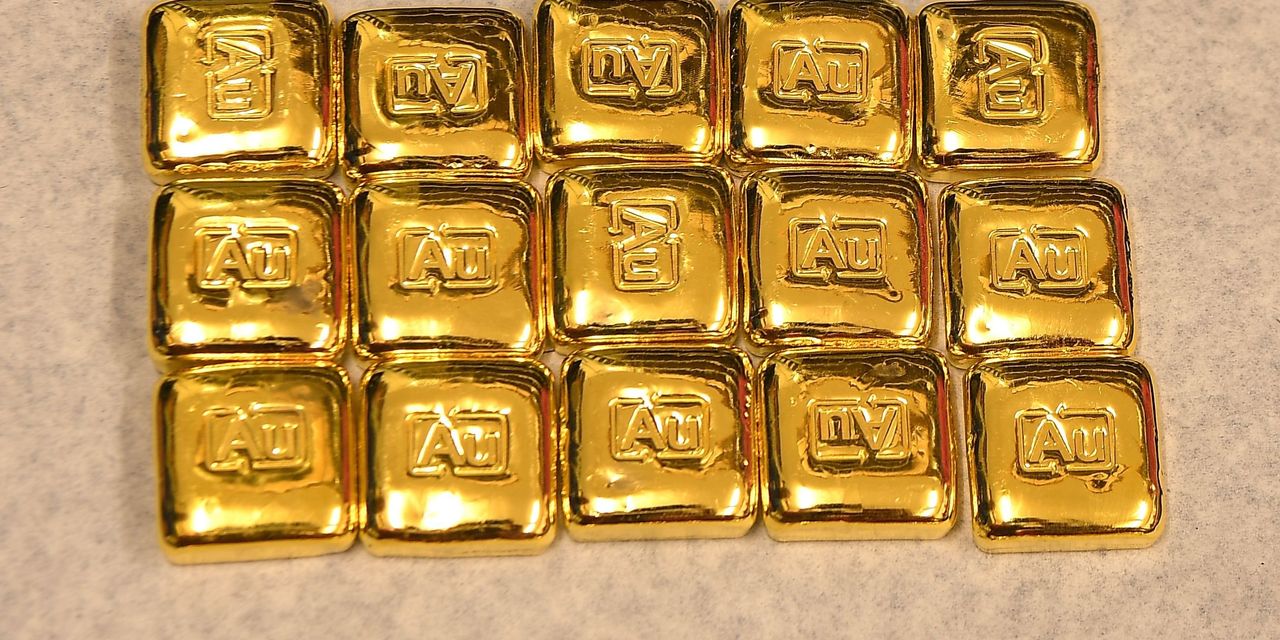Gold prices settled higher Friday ahead of a long holiday weekend, as the latest U.S. inflation data showed signs of cooling, but not enough to quell expectations the Federal Reserve will continue raise interest rates in 2023.
Price action
-
Gold for February delivery
GCG23,
+0.55%
gained $8.90, or 0.5%, to settle at $1,804.20 per ounce on Comex, according to FactSet data. The most-active contract ended the week 0.2% higher after losing 0.6% last week. -
Silver for March delivery
SIH23,
+1.24%
climbed 30 cents, or 1.3%, to end at $23.92 per ounce, settling 2.5% higher for the week. -
Palladium for March delivery
PAH23,
+4.46%
rose $59.60, or 3.6%, finishing at $1,732 per ounce, with a 1.5% of weekly gain, while platinum for January
PLF23,
+4.78%
climbed $45, or 4.6%, ending at $1029.60 per ounce, rising nearly 3% this week. -
Copper prices for March
HGH23,
+1.54%
gained 5 cents, or 1.4%, to finish at $3.81 per pound, with prices down over 1.3% for the week.
Market drivers
Gold prices edged up on Friday morning on the release of another batch of U.S. inflation data which showed the Personal Consumption Expenditures (PCE) price index rose 5.5% year-over-year in November, slower than 6.1% increase in the prior month.
However, the core PCE, which strips out volatile food and energy costs and is the Federal Reserve’s preferred gauge of inflation, climbed 4.7% in November from the year-earlier period, while economists polled by Dow Jones expected a gain of 4.6%.
The University of Michigan’s consumer sentiment index rose more than expected in December, buoyed by falling gasoline prices and a rebound in stocks earlier in the month.
Meanwhile, the ICE U.S. Dollar Index
DXY,
a gauge of the dollar’s strength against a basket of major currencies, was off less than 0.1% at 104.38. Treasury yields extended a rise with the yield on the 2-year Treasury note
TMUBMUSD02Y,
rising to 4.31% from 4.263% on Thursday.
Caroline Bain, chief commodities economist at Capital Economics, said the “coincident mini-rally” in the gold price is “somewhat surprising,” given that gold is often perceived as an inflation hedge.
“We suspect that some of the rise in the gold price reflects strong physical demand and/or concerns about impending recession. Regardless, we think the rally will fizzle out and that prices will ease back in early 2023 as the Fed continues to hike interest rates.,” she wrote in a Friday note (see chart below).

